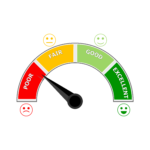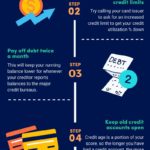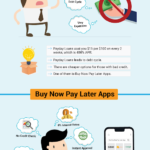Navigating the Catalogue Landscape: Your Guide to Catalogues Accessible with Poor Credit. For those individuals with poor credit, accessing catalogues can feel like a daunting task. However, there are options available that cater specifically to individuals with less-than-ideal credit scores. These catalogues offer a range of products and services that can help those with poor credit build their credit history and improve their financial situation.
One of the key benefits of catalogues accessible with poor credit is the opportunity to make purchases and pay them off over time. This can be especially valuable for those who may not have access to traditional credit cards or who are looking to rebuild their credit. Additionally, many of these catalogues offer flexible payment options and may not require a credit check, making them more accessible to individuals with poor credit. In the following sections, we will explore some key takeaways for navigating the catalogue landscape with poor credit, including tips for finding the right catalogue for your needs and managing your purchases responsibly.
key Takeaways
1. Catalogue shopping can be a beneficial option for individuals with poor credit, as it allows them to buy now and pay later through affordable installment plans.
2. Some popular catalogues accessible to those with poor credit include Studio, Fashion World, and Simply Be, each offering a variety of products from clothing to electronics.
3. It is important to carefully review the terms and conditions of catalogue agreements, as interest rates can be high and missing payments can negatively impact credit scores.
4. By making timely payments and managing finances responsibly, individuals can improve their credit score over time and potentially qualify for better borrowing options.
5. Overall, catalogues can be a valuable resource for those with poor credit looking for convenient shopping options, but it is crucial to use them wisely and stay on top of payments to avoid further financial difficulties.
How Can You Navigate the Catalogue Landscape with Poor Credit?
Understanding Catalogues for Poor Credit
When you have poor credit, traditional avenues of credit may be closed to you. However, there are still options available, such as catalogues that cater to individuals with poor credit scores. These catalogues offer a variety of products that you can purchase on credit, allowing you to make purchases even if you have a low credit score. If you’re looking for the easiest catalogues to get with bad credit, which offers accessible solutions tailored to individuals facing credit challenges.
Researching Catalogues for Poor Credit
Before diving into the world of catalogues for poor credit, it’s important to do your research. Look for catalogues that specifically advertise themselves as being accessible to individuals with poor credit. You can also read reviews and compare the terms and conditions of different catalogues to find one that best suits your needs.
Managing Your Catalogue Account
Once you’ve chosen a catalogue to work with, it’s important to manage your account responsibly. Make sure to make payments on time to avoid damaging your credit score further. Additionally, be mindful of interest rates and fees associated with your purchases to ensure that you can afford to pay off your balance.
Building Your Credit with Catalogues
One benefit of using catalogues for poor credit is that they can help you build or rebuild your credit score. By making timely payments on your catalogue purchases, you can demonstrate responsible credit behavior and improve your creditworthiness over time.
Expanding Your Options
As you work on improving your credit score with the help of catalogues, you may eventually qualify for traditional credit options with better terms and conditions. Use your experience with catalogues to establish good credit habits that will serve you well in the future.
What Are Some Tips for Navigating Catalogues with Poor Credit?
1. Make sure to read the terms and conditions of catalogue offers carefully to avoid unexpected fees.
2. Keep track of your purchases and payments to stay on top of your account and avoid overspending.
3. Consider setting a budget for catalogue purchases to ensure that you can afford to pay off your balance each month.
4. Take advantage of any credit-building resources offered by the catalogue to help improve your credit score.
Frequently Asked Questions
1. Can I get a catalogue with poor credit?
Yes, there are catalogues specifically designed for individuals with poor credit. These catalogues can help you rebuild your credit while still allowing you to shop for the items you need.
2. How do I qualify for a catalogue with poor credit?
Qualifying for a catalogue with poor credit is often easier than traditional credit options. Some catalogues may require a soft credit check, while others may not check your credit at all. You may also need to provide proof of income to qualify.
3. What kind of items can I purchase with a catalogue for poor credit?
You can typically purchase a wide range of items with a catalogue for poor credit, including clothing, electronics, home goods, and more. Some catalogues may have restrictions on certain items, so be sure to read the terms and conditions carefully.
4. Are there any fees associated with using a catalogue for poor credit?
Some catalogues for poor credit may have fees associated with them, such as an annual membership fee or high interest rates. Be sure to carefully review the terms and conditions before applying for a catalogue to understand any potential fees.
5. Can using a catalogue for poor credit help improve my credit score?
Yes, using a catalogue for poor credit responsibly can help improve your credit score over time. Making timely payments on your catalogue purchases can show creditors that you are a responsible borrower.
6. What happens if I miss a payment on my catalogue for poor credit?
If you miss a payment on your catalogue for poor credit, you may be charged a late fee and it could negatively impact your credit score. It’s important to make payments on time to avoid any additional fees or damage to your credit.
7. How can I find the best catalogue for poor credit?
You can research different catalogues for poor credit online to compare their terms, fees, and available products. Reading reviews from other customers can also help you determine which catalogue may be the best fit for your needs.
8. Can I return items purchased with a catalogue for poor credit?
Most catalogues for poor credit have return policies in place that allow you to return items within a certain timeframe. Be sure to familiarize yourself with the catalogue’s return policy before making a purchase.
9. Is there a limit to how much I can spend with a catalogue for poor credit?
Most catalogues for poor credit have credit limits in place that dictate how much you can spend. Your credit limit will be based on various factors including your credit history, income, and the catalogue’s policies.
10. How do I apply for a catalogue for poor credit?
Applying for a catalogue for poor credit is typically done online. You will need to provide personal information such as your name, address, and income, as well as consent to a credit check if required. Once you submit your application, you will typically receive a decision within a few business days.
Final Thoughts
Overall, navigating the catalogue landscape with poor credit can be a beneficial option for individuals looking to rebuild their credit while still accessing the items they need. By understanding the terms and conditions of different catalogues and using them responsibly, you can take steps towards improving your financial situation.
It’s important to research and compare different catalogues for poor credit to find the best fit for your needs. Remember to make payments on time, avoid overspending, and take advantage of the opportunity to improve your credit score through responsible use of a catalogue for poor credit.





